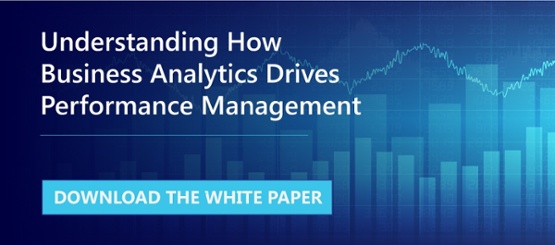Living in the Seattle area, there are plenty of technology career opportunities, with some very interesting companies and talented people. At the same time, however, I took a step back and thought about a company I’d come across while working at Microsoft. The company was called River Logic, and it had the most interesting IP I had come across in 25+ years of working in the enterprise software industry.
It was then that, against all the other opportunities I had been tempted with, I joined up with River Logic.
Building a Game Changer
Early on, I began to think about opportunities and ideas I could contribute to grow River Logic and its core IP, and turn them into a major player in the analytics/performance management market. In making this decision, I also took into account the market trends over the last 18–24 months. I realized that River Logic had all the ingredients to become a clear market leader, and could capitalize on the inherent value of the IP they had developed.
Becoming a clear market leader would mean:
- Growing brand recognition and affinity
- Establishing a clear technology and business value, as well as competitive advantage and differentiation
- Executing on sales/profitability growth
- Having the people and talent to accomplish all of the above
The team at River Logic certainly had this talent, as well as the capabilities to become a market leader. That's four points checked off already!
The next checklist item was to think about the market for the IP. In observing the market over the prior 18-24 months, I saw a number of clear drivers emerging in the analytics/performance management space. These were drivers that had, to some extent, refocused the traditional BI market, and certainly raised market awareness of analytics. The following sections provide a brief run-through of these key drivers.
Data Visualization
This sector has seen Tableau drive dramatic growth and brand recognition. Alongside Tableau’s success, there are a number of emerging new offerings in the market, including :
- Power BI from Microsoft (just acquired Datazen)
- Domo (just completed raising another $200M to take their total investment to just under $0.5B)
- Qlik, which is trying to relaunch and redefine its offerings
- SAP Lumira
- Many others, including a number of smaller, cloud-based offerings.
Data visualization is seeding a larger audience for information consumption, setting higher expectations on visual experience and user simplicity, and moving the maturity curve forward. As a result, people and organizations are looking for greater understanding and capabilities with regards to the information they're seeing.
Predictive Analytics
The predictive sector is being driven by high profile cloud service offerings from IBM (Watson), Microsoft and Amazon. Alongside the big three, there a number of other major players, including SAS, SAP, Oracle and others. There is a lot of buzz around predictive analytics, but it has not yet hit mainstream utilization, and typically requires the specialized data science (statistician) people to write the appropriate algorithms for specific applications.
There is also the emerging trend of machine learning, which reduces the need for dedicated data science resources; however, there is some ways to go before this is generalized sufficiently for broad business/organization applicability.
What the buzz has done has raised broad awareness of applied analytics and its potential – again influencing the maturity curve and raising expectations. There is a risk in the sector that the core predictive technologies will become commoditized through the competitive offerings from IBM, Microsoft and Amazon, leaving the monetization in applied predictive applications; applications that would be integrated in generalized planning and reporting applications.
Big Data / Internet of Things
 The opportunity to capture and utilize more data about personal, professional and organizational activities, as well as device generated data, has created a significant expansion beyond what traditional, on-premise OLTP systems sources provide. The growing scale and complexity of available data is accelerating the business need for abstract capabilities, and requiring the underlying business model to understand:
The opportunity to capture and utilize more data about personal, professional and organizational activities, as well as device generated data, has created a significant expansion beyond what traditional, on-premise OLTP systems sources provide. The growing scale and complexity of available data is accelerating the business need for abstract capabilities, and requiring the underlying business model to understand:
- What is going on
- Why it's going on
- And, hopefully, what should be anticipated
Predictive analytics only helps in-part with the modeling aspect, as most people in an organization won’t understand the native predictive models. These are models typically presented as blackbox processes, which crunch data with little or zero human interaction.
Cloud-based Planning and Modeling
Given the drive and need to expand organization planning and modeling, a number of cloud-based planning vendors have emerged. Many have been backed by VC money (Anaplan, Adaptive, Host Analytics, Tidemark etc), together with some new offerings from SAP (Cloud for Planning) and Oracle Cloud Planning. Most of the offerings focus on financial planning or sales planning, with some operational planning aspects.
The sweet spot currently for cloud-based planning is for departmental size planning efforts, with a strong financial or sales planning orientation. To date, however, the planning solutions are not hitting the mark for highly scalable or operational planning solutions.
Summarizing the Market Drivers
The above market drivers can be summarized into a very basic list of customer needs and expectations (base use cases):
- Users want better access to information
- Users want better visual representations
- Users want better models of the organization and the outcomes they are trying to achieve
What Are the Implications for River Logic?
The above market drivers, as well as the further development of maturity models for analytics and performance management, are making the context for Prescriptive Analytics (and River Logic) more explicit. There is an attachment approach that is emerging for Prescriptive Analytics, alongside Predictive Analytics and Operational Planning, that is an obvious and natural fit. There is becoming less need to “educate” the market and organizations on what River Logic offers and why - it's becoming clear.
At the same time, the bar is rising on a number of aspects, which are bringing River Logic more into play:
- The need for better and more relevant context (for fundamentally more users and organizations) for prescriptive analytics
- The rising importance of User Experience / Ease of Use
Business Modeling

Business modeling is a way to visualize the ideal approach for organizational Analytics and Performance Management. There is an important relationship to identify between:
- Financial/Operational Planning Models and Prescriptive Analytics Models
- Performance Monitoring and Prescriptive Analytics Models
The planning “variables” or inputs are typically very similar, if not the same, between financial/operational and prescriptive analytics modeling. Additionally, the KPIs for performance monitoring will be fundamentally related to prescriptive analytics models.
The relationship between Predictive Analytics and other areas of Business Modeling can be more variable – that is, Predictive can be strongly aligned to the data models of the organization, as well as the business models. What Predictive can give is valuable inputs to both traditional planning and prescriptive modeling.
Given the above Business Modeling relationships, there is an opportunity to provide Prescriptive Analytics in context for more users in an organization, and make it pervasively relevant for them by being able to:
- Extend operational planning to the full extent of an organization
- Extend the capabilities of operational planning with prescriptive analytics
- Extend the capabilities of performance monitoring with prescriptive analytics
- “Plug in” predictive analytics as inputs to operational planning and prescriptive analytics, where applicable
- Enable the full optimization of financial planning through the above steps
The adoption of broader operational planning and prescriptive analytics needs to be put into targeted and focused applications. These applications need to provide context and relevance to users, and target specific (functional) areas of an organization, as well as specific types of an organization (verticals). These applications could be termed “Performance Management Application Solutions,” with some being horizontal offerings that might be supplied directly, while others could be created for verticals by subject matter experts.
Market Segmentation
Put simply, Prescriptive Analytics answers the questions the predictive analytics can’t answer. It is a significant market differentiator in the Analytics and Performance Management space.
At the same time, the model(s) that prescriptive analytics represent are often easier to understand, in terms of business models, than predictive models. Exposing prescriptive analytics through a great user experience is important to appeal to a larger user base.
Go-to-Market/Sales Channel
Working with domain expert partners is a highly effective and efficient Go-to-Market approach, which appeals to partner industries and segments expertise, customers and organizations. This provides solutions specific to a user's needs. River Logic has a well-developed partner channel, including:
- Global/Major Management Consulting Partners
- National/Local Management Consulting Partners
- National/Local Microsoft Consulting Partners
The approach to deliver the River Logic IP as a cloud-based SaaS offering also provides a tremendous opportunity to deliver an outstanding experiencing, both simply and elegantly to customers and organizations.
The opportunity and excitement is there for prescriptive analytics; opportunities that are becoming more approachable and attainable than they have ever been, thanks in-part to vendors investing in different areas of analytics and performance management. Acting smartly, River Logic can take full advantage of these investments. With strategic partnering, River Logic can provide unique and compelling business modeling and monitoring capabilities, unique within the marketplace. I’m signed up and looking forward to delivering the next big game changer.
Peter Bull
Chief Technology Officer
River Logic








